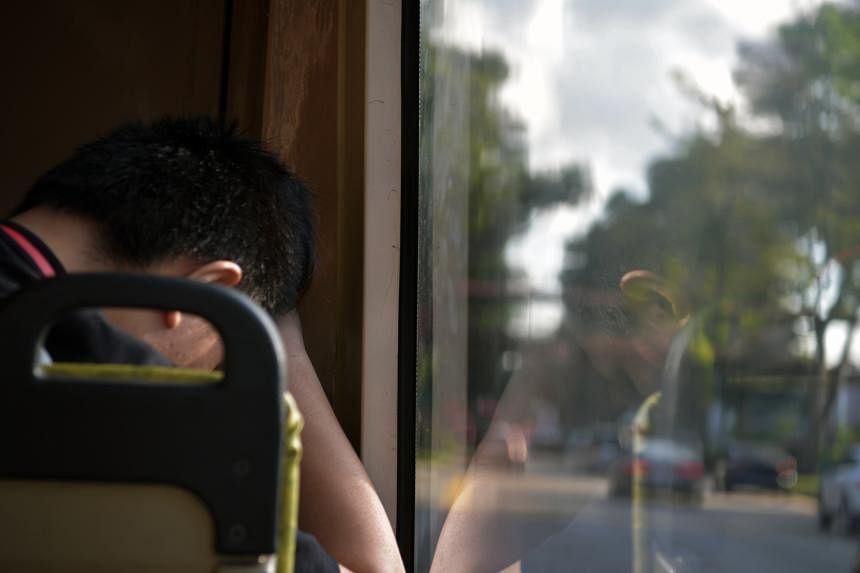SINGAPORE - More than half of respondents falsely believe that most suicides happen suddenly without warning, a recent survey by the Singapore Management University (SMU) has found.
Some 56 per cent of them think this way, slightly higher than the 53 per cent in 2022 when a poll on the same issue was done.
The latest results showed that 31 per cent believe a person dying by suicide was unwilling to seek help, up from 27 per cent in 2022.
Eight in 10 think that when someone talks about suicide, he could take his life, according to the study’s findings released on April 18.
This is “the most outstanding prevailing myth about suicide”, said SMU principal lecturer of statistics Rosie Ching, who led 140 undergraduates to conduct the survey on attitudes around suicide.
Done in partnership with Samaritans of Singapore (SOS), the survey found that misconceptions about suicide persist from 2022, when an earlier survey was conducted. From January to March 2023, 5,274 people were polled through face-to-face interviews, telephone calls and Zoom.
The poll comes on the back of a record-high number of suicides reported in 2023 by SOS, and 476 suicides reported in Singapore in 2022, the highest since 2000.
Ms Ching said SOS asks callers whether they are thinking of taking their lives. “They don’t beat about the bush. A person will feel release and relief when they are offered opportunities to talk about it, rather than dancing around the topic.”
Eight in 10 respondents believe there is stigma around suicide in Singapore. Ms Ching said there was great pushback among those who were asked to participate in the survey, such as parents and seniors. “Some may have had brushes with suicide in their family and the topic is too painful for them.”
She said the lack of conversations on the topic is due to the fear of making the situation worse and she herself was afraid of conducting the study for this reason.
Only about one in three of those polled said he or she would do something to help someone who is suicidal. Of the two-thirds who would not try to help, more than 70 per cent cited their fear of making the suicidal person feel worse, their lack of ability to do anything and lack of knowledge.
Other key findings include the continued stigma around suicide, education levels making no difference in knowledge about suicide, and differing views towards suicide in different age groups.
The older an individual, the more he does not believe suicide can be predicted. More than 70 per cent of survey respondents below the age of 21 believe suicide can be predicted, while only 43 per cent of those in their 80s believe the same.
SOS chief executive Gasper Tan said it is important to be equipped with skills to identify signs of distress through suicide prevention training conducted by agencies like SOS.
For those more removed from suicide, the top reason for their low knowledge levels was the absence of a personal connection to suicide.
But those with immediate family members or relatives who had attempted or died by suicide cited a lack of outreach or education. This group also forms the highest proportion of those who believe that talking about suicide may give someone the idea of taking their lives.
Ms Ching said this shows a lack of understanding about suicidal feelings, even among those with loved ones who are troubled. “Suicide leaves a lot of unanswered questions, questions that may never be answered, and leads to a lifetime of confusion, grief, anger and guilt.”
Despite this, 90.2 per cent of respondents believe suicide can be prevented and that Singapore needs a suicide prevention strategy.
Mr Chirag Agarwal, co-founder of therapy platform Talk Your Heart Out, said: “People who want to talk about their own suicide ideation fear judgment or discrimination, while people who want to reach out to others fear making it worse or do not have the right vocabulary to engage in a conversation about it.
“It takes some practice to learn how to ‘hold space’ for someone and empathise with their situation and state of mind.”
Mr Tan said some progress in raising awareness about mental health has been made, especially after the Covid-19 pandemic. Yet, changing deeply ingrained beliefs requires ongoing education, open dialogue and challenging societal norms to foster greater understanding and empathy, he said.
“At SOS, we have seen a significant increase in service users tapping our continuum of services, indicating that the stigma of suicide and barriers to help-seeking are decreasing. But this takes an all-of-society approach as we continue to take strides forward to further reduce the stigma of suicide,” he added.


